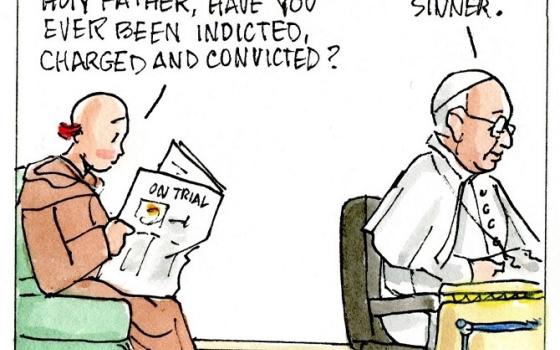Here's the problem with being around for 2,000 years: you tend to learn a few things. So as much as I get impatient sometimes with the glacial pace of change within the church, there are moments when I'm reminded that the institution has gleaned more than a few verities over the past couple of millennia.
For instance, greed -- and its modern-day significant other, consumerism. The financial collapse that marks its first anniversary today is one large "told you so" for a church that has often been a lonely voice against the American ethos summed up on the bumper sticker: "The one who dies with the most toys wins."
Sunday's Los Angeles Times presented a bracing look at how we have changed in the past 12 months. The report explores the possibility that Southern Californians may soon turn their back on ever-bigger houses that sit at the end of ever-longer drives from where we work.
In a bit of new-style irrational exuberance, experts quoted say we may even begin to look for homes near mass transportation. Walter Maloney, head of the National Association of Realtors, calls it "a return to basics."
My wife and I spent a few months last year house-hunting in the Los Angeles market, and "basic" is the last word we would have used. We went to one open house after another, where four-or-five thousand square foot homes crowded onto tiny lots, and loomed over more modest structures that had the poor luck to be built before 2004. The new homes were filled with sudden "must-haves": dual laundry rooms (one upstairs, another downstairs), separate wine refrigerators, industrial-strength stoves with a dozen burners, and master bathrooms the size of my childhood home.
The price for these houses nudged up against $2 million. Let's be clear: this was not Beverly Hills or Brentwood or Malibu. These were "typical" close-in suburban areas, filled with families.
To afford all these new necessities, everyone stopped saving and no one seemed to care. In 2005, Business Week reported the U.S. household savings rate was 0.9 percent, and worried that it might still be too high.
No need to worry, apparently: by early 2006, The New York Times noted that the household savings rate had actually fallen below zero -- but now at least some eyebrows were being raised; a few experts warned a "comeuppance" was due.
Well, yes. As the anniversary of that comeuppance is marked, the church has no time to gloat. Here in Southern California, Catholic social services and volunteer groups are overwhelmed by families hunting for the new "must-haves." Not his-and-her walk-in closets or SUVs that seat a whole soccer team -- but food, shelter, medicine and education.
In the end, church social teaching has long noted, things don't set you free, they trap you. Two-thousand years, and you figure that kind of stuff out.




